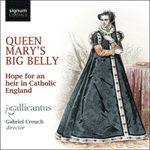Peccavimus cum patribus nostris is a Prayer-Motet which also bears classification as a Votive Antiphon, specifically a Jesus Antiphon by virtue of the words at the end of the first section. The cadence at the mention of the name of Jesus is heartfelt. The ear is prepared for a plagal cadence (IV–I), but instead the musical canvas is, without warning, illuminated with the colours of the supertonic (II). That the piece is scored for seven voices suggests that it dates from the reign of Queen Mary, and it certainly bears comparison with the other large-scale antiphons written during Mary’s reign by the likes of Tallis, Sheppard, and Mundy. Indeed
Peccavimus cum patribus nostris surpasses even the work of Tye’s contemporaries because of its organic growth and purposeful progression. The two extended sections for four voices, and another for three voices, do more than offer textural contrast: they manipulate the listener (and indeed performer) into adopting Tye’s resolute mindset which dictates that the composition exists solely to prepare—on a vast scale—for the arrival of its climax, where all good things (‘holy love, hatred of sin, and a burning desire for the heavenly kingdom’) ‘grow more and more’. In literal terms this piece is a romantic symphony: romantic because its narrative qualities are manifest, and symphonic because polyphonic lines have rarely sounded together so effectively.
from notes by Jeremy Summerly © 2012
Peccavimus cum patribus nostris est un motet-prière également classé parmi les antiennes votives, plus particulièrement celles de Jésus, à cause des derniers mots de sa première section. La cadence survenant à la mention du nom de Jésus vient du fond du cœur. Alors que l’oreille s’attend à une cadence plagale (IV–I), la trame musicale est tout à trac illuminée par les couleurs de la sus-tonique (II). Avec ses sept voix, cette pièce pourrait dater du règne de Marie et elle soutient assurément la comparaison avec les autres antiennes d’envergure composées sous ce même règne par les Tallis, Sheppard et autres Mundy. En fait, avec cette œuvre à la croissance organique, à la progression réfléchie, Tye surpasse même ses contemporains. Les deux sections prolongées à quatre voix, et une autre à trois voix, vont au-delà du contraste de texture: elles manipulent l’auditeur (et, au vrai, l’interprète) jusqu’à lui faire adopter la détermination de Tye dictant que la composition a pour seul but de préparer—à grande échelle—l’arrivée de l’apogée, où toutes les bonnes choses («l’amour sacré, la haine du péché et un brûlant désir de royaume céleste») «croissent de plus en plus». Cette œuvre est une véritable symphonie romantique: romantique par ses qualités narratives et symphonique parce que les lignes polyphoniques ont rarement résonné ensemble avec une telle efficacité.
extrait des notes rédigées par Jeremy Summerly © 2012
Français: Hypérion
Peccavimus cum patribus nostris ist eine Gebetsmotette, die ebenso als Votiv-Antiphon klassifiziert wird (und die sich aufgrund der Worte am Ende des ersten Abschnitts auf Jesus selbst bezieht). Die Kadenz, die erklingt, wenn der Name Jesu genannt wird, ist tiefempfunden. Das Ohr ist auf eine plagale Kadenz (IV–I) vorbereitet, allerdings wird die musikalische Struktur, ohne Vorwarnung, von den Klangfarben der Supertonika (II) ausgeleuchtet. Die Tatsache, dass das Werk siebenstimmig angelegt ist, deutet an, dass es aus der Herrschaft Marias stammt und es hält dem Vergleich mit den anderen großangelegten Antiphonen dieser Zeit von Tallis, Sheppard und Mundy durchaus stand. Aufgrund seines organischen Anwachsens und seiner zielgerichteten Entwicklung übertrifft
Peccavimus cum patribus nostris sogar die Werke der Zeitgenossen Tyes. Mit den beiden ausgedehnten Abschnitten für vier Stimmen und einem weiteren für drei Stimmen erzeugt Tye mehr als nur einen strukturellen Kontrast: durch sie manipuliert der Komponist die Hörer (und auch die Ausführenden) insoweit, als dass sie seine resolute Denkweise annehmen, die diktiert, dass die Komposition allein der Vorbereitung—in einem riesigen Maßstab—auf den Höhepunkt dient, wo alle guten Dinge („heilige Liebe, Hass gegen die Sünde, und eine brennende Sehnsucht nach dem himmlischen Reich“) „mehr und mehr wachsen“. Dieses Werk ist eine romantische Symphonie im wörtlichen Sinne: romantisch, weil seine narrativen Qualitäten offensichtlich sind, und symphonisch, weil polyphonische Linien nur selten derart wirkungsvoll zusammenklingen.
aus dem Begleittext von Jeremy Summerly © 2012
Deutsch: Viola Scheffel


 Queen Mary's Big Belly
Queen Mary's Big Belly
